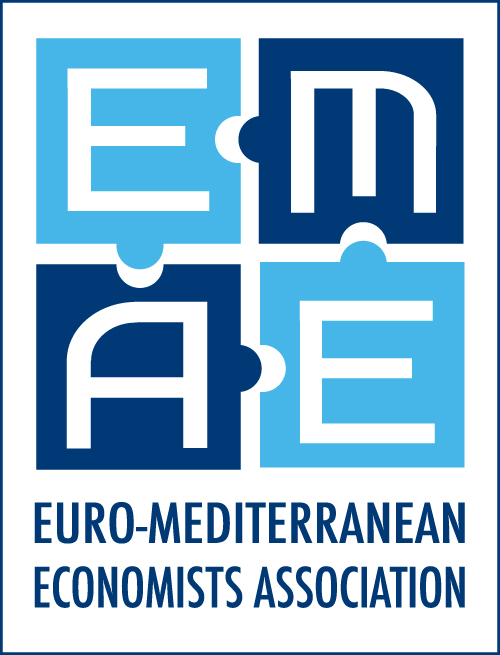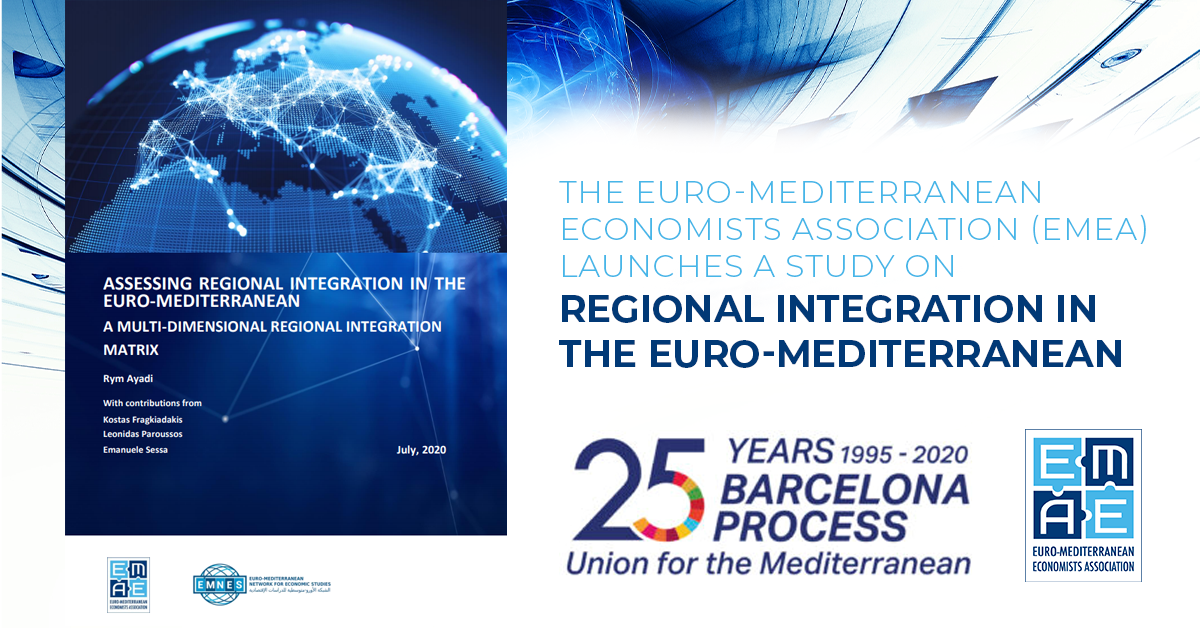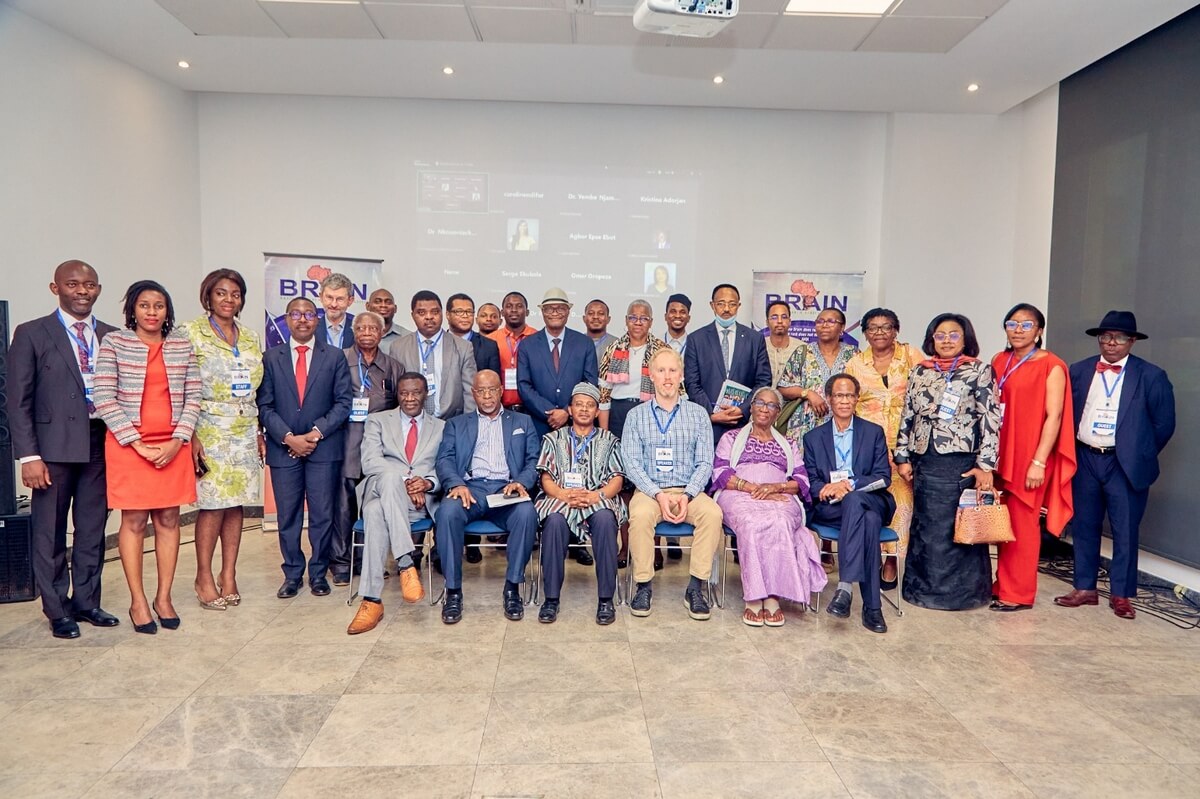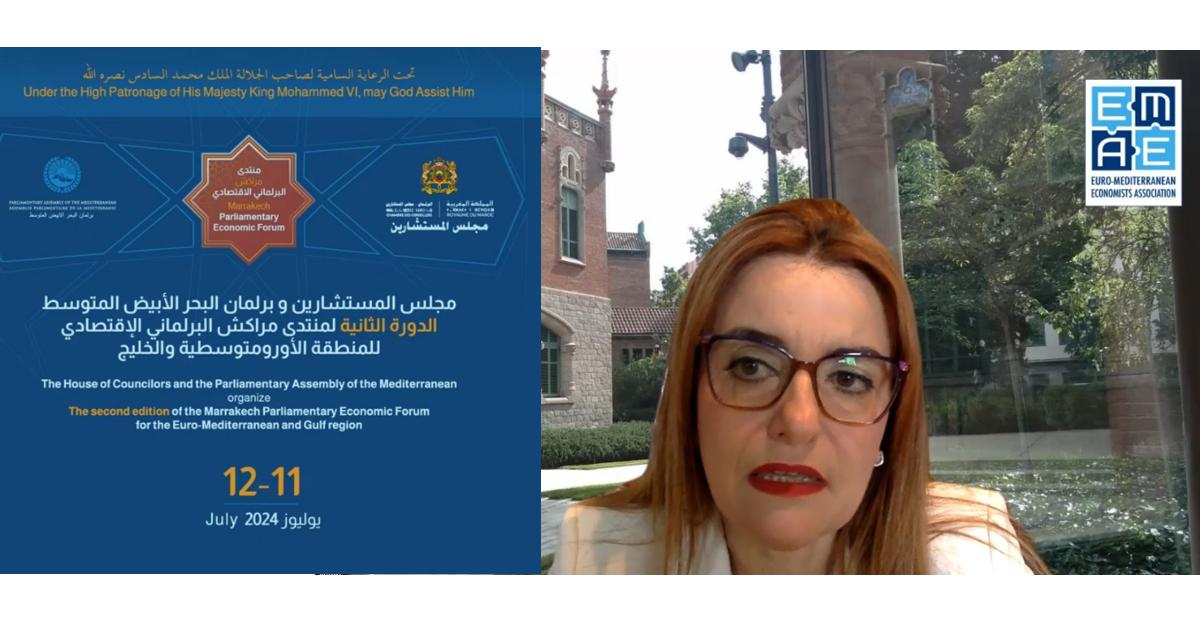The Euro-Mediterranean Economists Association (EMEA) with the support of the Union for the Mediterranean (UfM) published the study “Assessing Regional Integration in the Euro-Mediterranean: A Multi-Dimensional Regional Integration Matrix”, authored by EMEA President, Prof. Rym Ayadi, with contributions from EMEA researchers and Experts.
The Euro-Mediterranean region brings together countries with different cultural backgrounds and economic, social and political realities that are each developing at a varying pace and integrating with variable geometry. The developments in the Euro-Mediterranean region during the last decade highlight a trend towards more fragmentation, which is widening. The COVID-19 crisis put further pressure on the region and fundamentally questioned the process of regional integration, with the enforcement of lockdowns and mobility restrictions and the overall disruption of global value chains.
In view of this context, the objective of this study is to propose a regional integration matrix to assess the regional integration process in the Euro-Mediterranean region. The remainder of the study is organised as follows: the first chapter discusses regional integration and its monitoring at a conceptual level, based on a survey of relevant academic literature. The second chapter builds on and updates the work done by the lead author providing a brief history of Euro-Mediterranean integration, before turning to the question of whether past initiatives have led to economic catch-up between lower and higher income countries in the region. The third chapter proposes the Regional Integration Matrix (RIM) to monitor regional integration in the Euro-Mediterranean. The RIM builds on a multi-dimensional approach that integrates trade, FDI, political, governance, finance, infrastructure, human mobility, higher education and research. It emphasizes the role of complementarities, the variable geometry that goes beyond the usual geographical boundaries of the Euro-Mediterranean region.
In a nutshell, the regional integration matrix is composed of seven mutually interactive dimensions: Trade integration drives increasing exchanges between countries which, in turn, enhance interdependence between their economies. Under the right conditions, trade liberalization enables foreign firms to access domestic markets, increasing competition and resulting in productivity gains, whilst also enabling domestic firms to access foreign markets and achieve economies of scale. For these positive dynamics to unfold from increasing interactions between foreign and domestic firms, trade integration should be accompanied with investments in productivity, suggesting that FDI levels between integrating countries should increase in the short-term and converge in the mid-to-long term. This explains the importance of monitoring FDI integration. However, for FDIs to increase, stable institutions, policies and underlying governance factors (e.g. rule of law, anti-corruption, regulatory quality, government effectiveness etc) are essential to maintain countries’ manageable risk premiums. Increasing interdependence between economies translates into increased correlation between the financial markets supporting those economies which, in turn, require financial integration to better manage monetary and systemic risks and to enhance overall stability. The resulting reduction of uncertainty related to financial transactions between integrating countries facilitates FDI, whilst also reducing the interest paid by countries on financial markets, increases their capacity to invest in infrastructure. Infrastructure integration is crucial to physically and digitally connect countries with one another and facilitates exchanges, including person-to-person contacts, mobility of goods, capital, services and labour. That said, labour mobility might lead to the contrasting dynamics of brain drain and brain gain, rather than beneficial brain circulation between integrating countries if labour market conditions are too unequal. Against this backdrop, convergence between labour market conditions is a precondition for the reduction of barriers to mobility and labour market integration which, under the right conditions, would enable laborers to access a wider pool of available jobs and, conversely, allow firms to access a wider pool of available skills. Last but not least, integration between education systems underpins convergence between the quantity and quality of skills that students are equipped with, thereby creating a level-playing field for labourers to compete for the available jobs and for firms to find the required skills. Integration in research will result in higher innovation capacity for the region as a whole, since innovation is largely driven by emulation and cross-fertilization.
Link to Study
Link to Statement on the 25 years of the Barcelona Process by Prof. Rym Ayadi
For further information contact: rym.ayadi@euromed-economists.org or
info@euromed-economists.org





